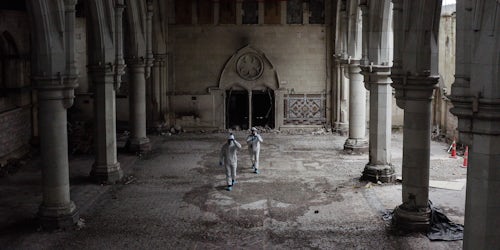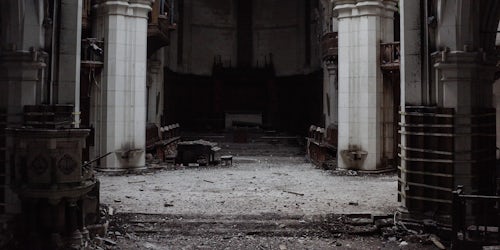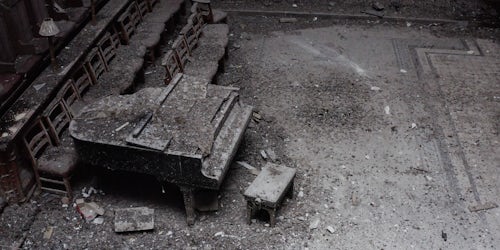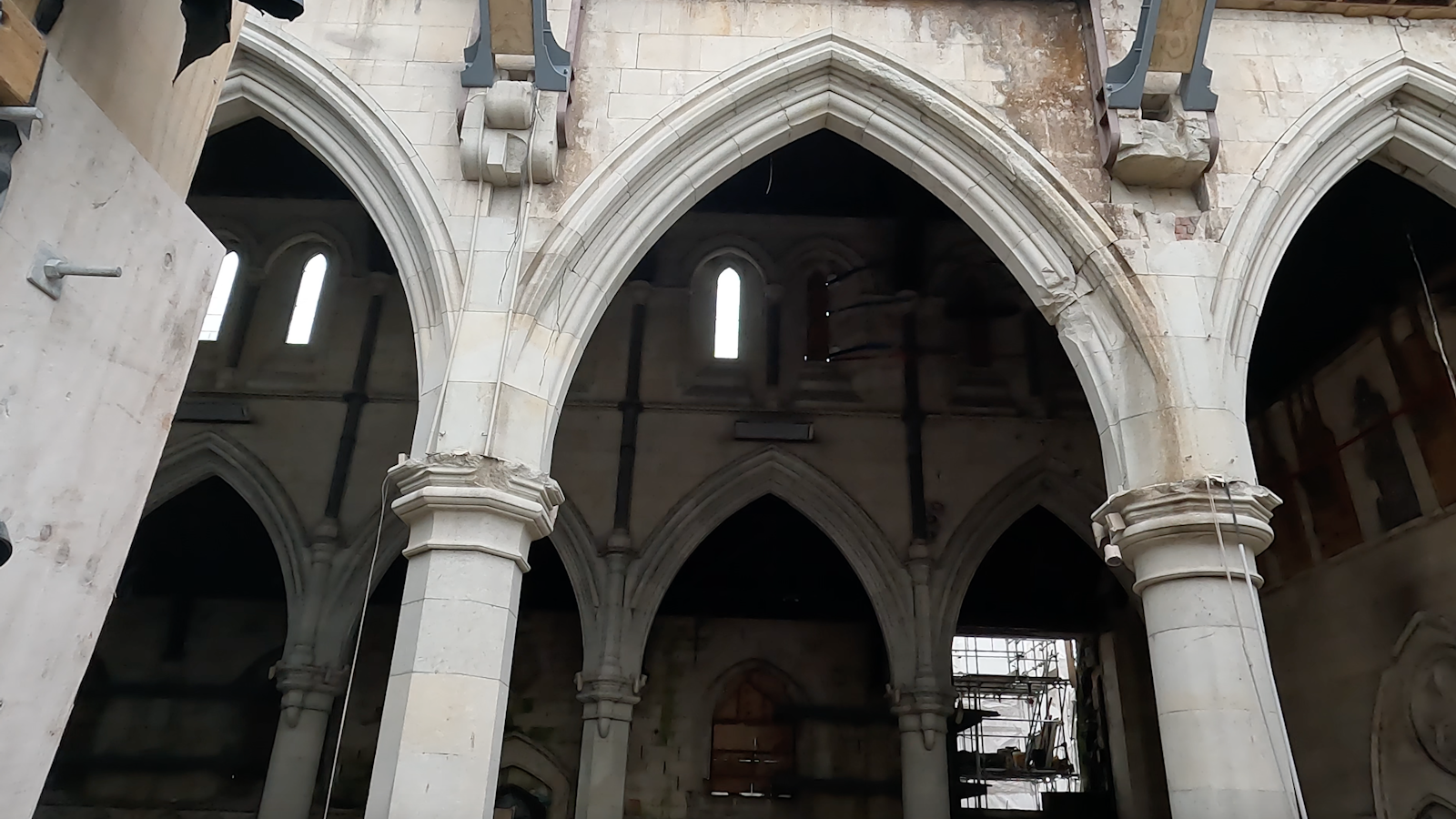First human entry into Cathedral since 2011
17 August 2022Media ReleaseNews
Christ Church Cathedral Reinstatement (CCRL) has hit a major milestone with the first human entry into the Cathedral since Urban Search and Rescue (USAR) in 2011 post-earthquake.
The highly controlled entry was made through the northern side of the building by CCRL.
Site Manager and Senior Engineer. This first inspection was to check for any engineering or safety concerns that needed to be addressed before contractors can begin work safely inside the Nave to stabilise the existing columns.
Project Director Keith Paterson said, “We felt confident in taking this next crucial step forward in the reinstatement journey. This entry allows us to plan and create a scope of work for the final stage of the stabilisation. The installation of the external steel supports has adequately mitigated any risk of collapse. This is a significant and exciting moment for the project and stabilisation phase, which is now about 90% complete.”
Meticulous planning preceded this highly choreographed event. Workers were inside for only 10 minutes, just enough time to properly assess the risks and carry out the investigation into further stabilisation.
“We were very happy with what we saw inside the Cathedral. There were no surprises, and in fact, some of the columns we inspected were in better condition than assumed. We can now confidently move forward and prepare the work plan for the next step in the project,” said Keith.
The Nave column stabilisation is one of the last major pieces of work in the stabilisation phase. Its completion is planned to coincide with the crossing roof stabilisation and, ultimately, the 34% New Building Standard, the standard required for the building to be no longer categorised as earthquake prone and safe enough to commence reinstatement.
Prior to human entry, ‘Spot’ the remote-controlled robot dog, drones and the remote-controlled digger were the only technologies to have entered the Cathedral as part of the Reinstatement Project.
Human access marks a massive goal for the project since reinstatement commenced in May 2020, and was a key focus for the project this year. The early completion of the remote-controlled digger’s internal clean-up has been a tentative step towards allowing controlled human access.
Image credit: © Tom Cuthbert / Belmont



